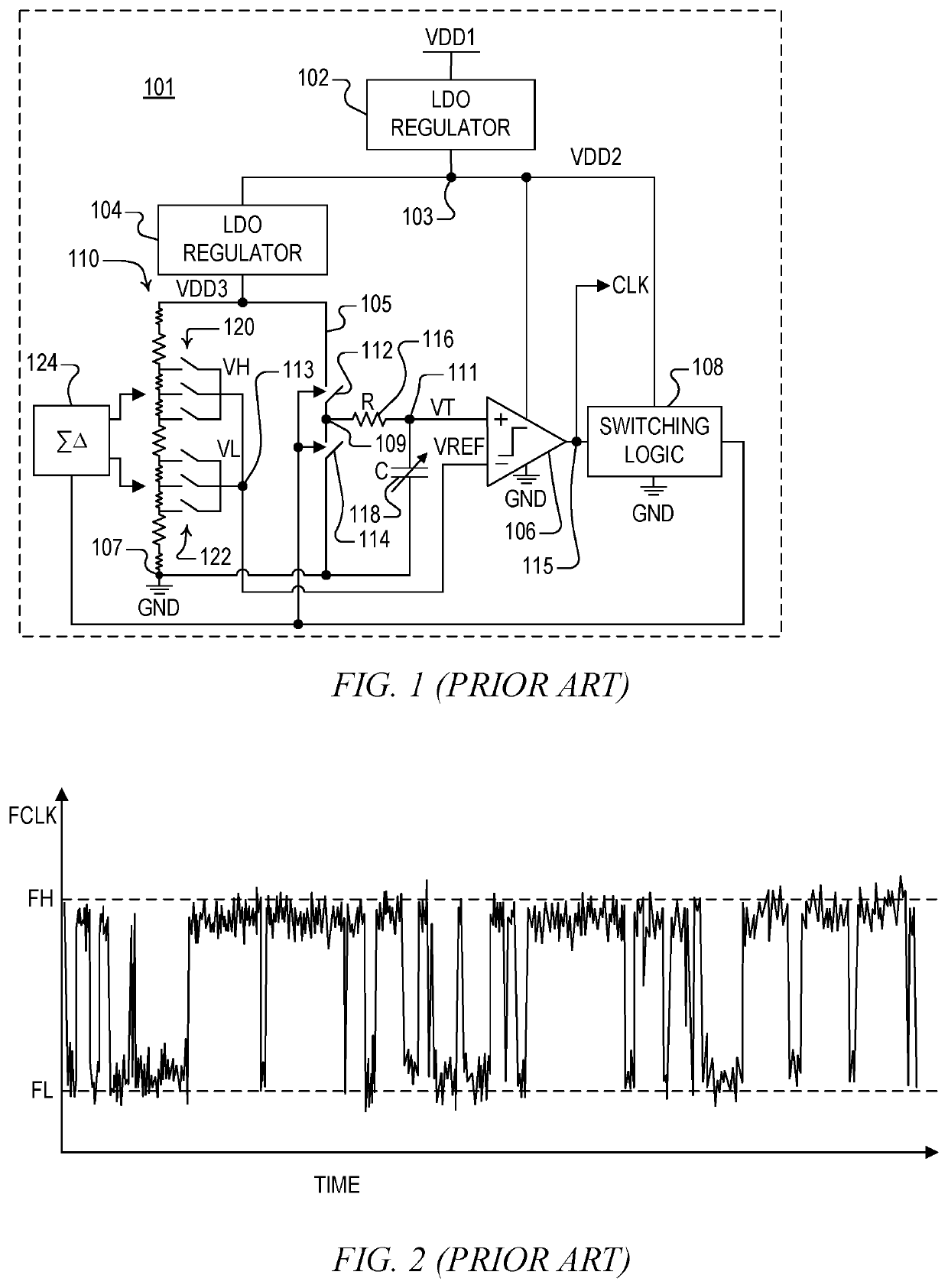System and method of duplicate circuit block swapping for noise reduction
a technology of circuit block swapping and noise reduction, applied in the direction of oscillator generator, amplifier modification to reduce noise influence, etc., can solve the problems of audio circuits, circuits and applications that operate with relatively long time constants, require relatively high accuracy, improper operation or erroneous operation, etc., and achieve the effect of reducing noise on a semiconductor circui
- Summary
- Abstract
- Description
- Claims
- Application Information
AI Technical Summary
Benefits of technology
Problems solved by technology
Method used
Image
Examples
Embodiment Construction
[0030]The inventors have recognized the problems associated with RTN and also the difficulty in detecting RTN during production testing. They have therefore developed a system and method of duplicate circuit block swapping to reduce RTN. RTN is reduced without the need to identify the source of RTN causing the performance degradation. Although large functional circuits may be duplicated and swapped out during operation to reduce noise and improve operation, judicious selection of the duplicated circuit block may reduce the area and power penalty associated therewith.
[0031]FIG. 1 is a schematic and block diagram of a conventional relaxation oscillator 101, such as described in U.S. Pat. No. 9,823,687, entitled “LOW FREQUENCY PRECISION OSCILLATOR,” issued Nov. 13, 2017 to Mukherji et al. A first low dropout (LDO) regulator 102 receives a first supply voltage VDD1 and provides a second supply voltage VDD2 on a supply node 103, and a second LDO regulator 104 receives VDD2 and provides a...
PUM
 Login to View More
Login to View More Abstract
Description
Claims
Application Information
 Login to View More
Login to View More - R&D
- Intellectual Property
- Life Sciences
- Materials
- Tech Scout
- Unparalleled Data Quality
- Higher Quality Content
- 60% Fewer Hallucinations
Browse by: Latest US Patents, China's latest patents, Technical Efficacy Thesaurus, Application Domain, Technology Topic, Popular Technical Reports.
© 2025 PatSnap. All rights reserved.Legal|Privacy policy|Modern Slavery Act Transparency Statement|Sitemap|About US| Contact US: help@patsnap.com



